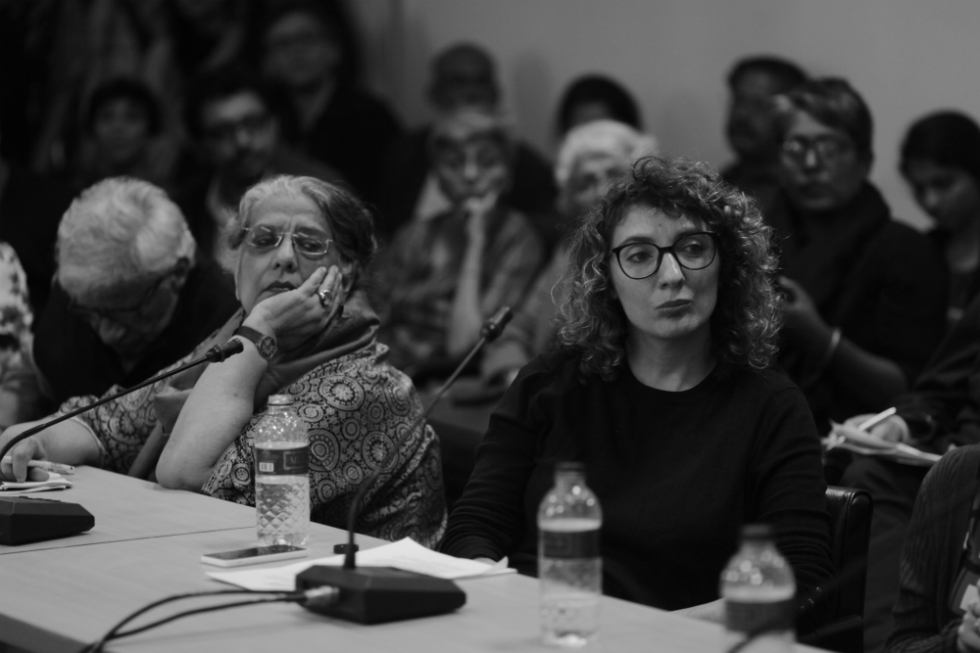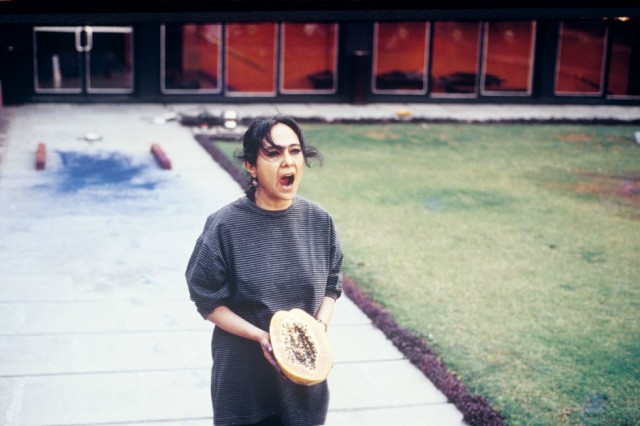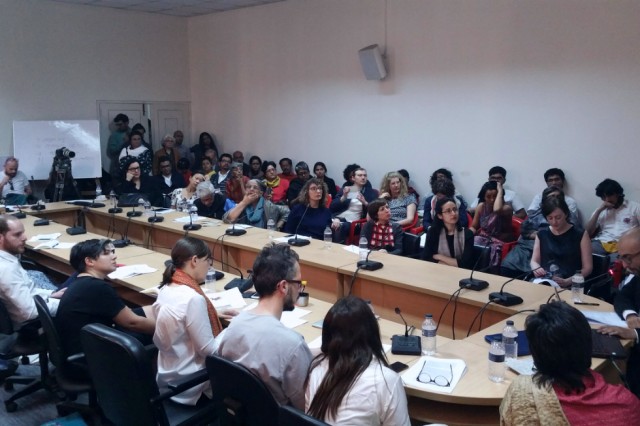Critical Writing Ensemble @ Dhaka Art Summit 2016 — Reviewed

Emma Sumner is thrown headlong into a forum for experimental critical writing practices in Bangladesh. But how would the issues faced by those actively working in the field of critical writing be discussed?
Bangladesh’s capital city of Dhaka was last month transformed into an experimental space for the discussion of arts criticism, and indeed, its future. Despite the already intense heat, art work was being installed, carpets fitted and staff busily ticked off last minute jobs for the Dhaka Art Summit, the world’s largest research and exhibition platform for art from South Asia; and it intended to celebrate its opening with an intensive four-day Critical Writing Ensemble (CWE).
Developed by an impressive list of collaborators – Diana Campbell Betancourt, artistic director of the Dhaka Art Summit, with Katya García-Antón, director and curator of the Office of Contemporary Art Norway, Chandrika Grover, head of liaison at Office India of the Swiss Arts Council, and in collaboration with Bhavna Kakar, director of Take on Art Magazine based in New Delhi, India – the CWE’s programme promised to analyse critical writing in a cross-regional context, while looking to reposition previous thinking and pose new questions for consideration.
Bringing together peers from across the globe, the CWE was a space for exchange between a variety of minds already working within the forum of critical writing, teaching it as a subject or promoting and developing the medium within their own locality. Using a seminar format of presented research papers, topics included Writing Within and Against the Art School, The Political Unconsciousness of Art Writing, and Entangling and Disentangling Printed Matter; each topic acting as a working constellation in which peers could share their knowledge in a vision to create new critical writing impulses.

Amongst many speakers over four days, the three talks of particular interest came from Chus Martínez, curator and head of the Institute of Art at FHNW Academy of Art and Design, Basel, Geeta Kapur (pictured, top left), art historian, curator and critic, and Aunohita Mojumdar, editor of Himal Magazine, Kathmandu, Nepal. Martínez’s paper titled One Foot in Sea, and One on Shore, To One Thing Constant Never, explored what she terms to be a ‘Metabolic Era’; explaining her frustration as faculty member at the lack of enthusiasm in her students to read. It is this issue which has sparked an interest in ignorance for Martínez, who explained the importance of transforming life through physical and mental ingestion, hinting that this lack of desire to read is part of the issue with the current state of critical writing.
During the third day of papers, inimitable expert on contemporary art and theory Kapur started the day with her paper Forms of Address: Personal Testimony and Public Engagement. Drawing on the importance of texts and documentation within the work of artists, Kapur used artists Rummana Hussain (pictured, above) and Jitish Kallat as case studies to explain methods of critiquing current political and ethical dilemmas. Kapur’s paper divulged how public address can be used as a rhetorical negotiation inserted into the discourse of an artist’s address questioning the afterlife of words; are an artist’s words simply for the moment or are they designed to resonate into the future? A highly relevant thought as the audience and CWE peers consider the purpose of their own words as critical writers.

On the final day, as the CWE began to conclude, the peers and gathered audience listened attentively to Mojumdar as she discussed the responsibility of the writer in the theatre of war in her paper, Real Stories, Unreal Challenges. Having lived and worked in Afghanistan for a number of years before relocating to Nepal, Mojumdar knowledgably discussed the everyday realities in territories of conflict and violence. Questioning what we read when we read about areas of conflict, Mojumdar’s paper analysed the challenges faced by war journalists in areas like Afghanistan where the situation is over reported but yet under narrated, raising the pertinent question; how and where can we make space to look at such issues with an editorial neutrality?
Although providing a forum in which to untangle what it is that formulates critical writing by examining a variety of topics, writing styles and issues, many of the papers felt heavily descriptive of the individual reader’s experience and fairly explanatory in their tone. Although each paper created discussion around its subject matter and opened up views which helped to unlock how we see and define critical writing, it felt as though some of the main issues facing critical writers today were not addressed perhaps as extensively as they could have been. Fair pay for writers and how we can nurture critical writing as a medium were only touched upon briefly, and with very little follow up.
With an ambition to nurture conversations between the peers and a planned publication which will compile the knowledge and thought processes presented, it is suggested that there will be a follow up. The Dhaka chapter of the CWE felt to be more a forum for experimental practices and how critical writers talk about their subject, rather than a space in which the issues faced by those actively working in the field of critical writing could be discussed. An interesting and though-provoking programme, yet perhaps – ironically – some of the more critical discussions are still to come.
Emma Sumner
Read more on the Dhaka Art Summit and Critical Writing Ensemble on e-flux conversations, and on the official Dhaka Art Summit webpage
Images, from top: Geeta Kapur and Quinn Latimer, courtesy NoorPhotoface; artist Rummana Hussain, courtesy Bhavna Kakar, The Estate of Rummana Hussain, represented by Talwar Gallery; audiences at the Dhaka Art Summit 2016, courtesy Emma Sumner.





